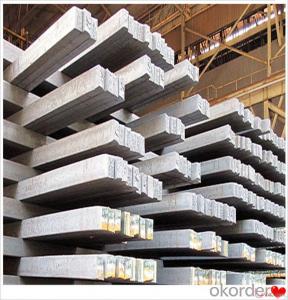Q275 Steel Billets Q235,Q255,Q275,Q345,3SP,5SP,20MnSi Made in China
- Loading Port:
- China main port
- Payment Terms:
- TT OR LC
- Min Order Qty:
- 20 m.t.
- Supply Capability:
- 200000 m.t./month
OKorder Service Pledge
OKorder Financial Service
You Might Also Like
Q275 Steel Billets Q235,Q255,Q275,Q345,3SP,5SP,20MnSi Made in China
Specification
Steel billet(ingot) by cogging or breakdown of semi-finished products, is the raw material of all kinds of steel mill. Billet section of square, round, flat, rectangular and abnormity of several kinds of, mainly related to the shape of rolled products.
CNBM Q235,Q275,Q345,3SP,5SP,20MnSi Billets Steel
Hot Rolled Steel Billets/ Mild Steel Bar/ Billet Steel
Specification (see below)
Standard: GB/JIS/ASTM
Size: 50*50mm-180*180mm
Length: 3-12mtrs or Customised
Steel material: Q235,Q255,Q275,Q345,3SP,5SP,20MnSi
Technique: Hot rolled
FOB Unit Ton Price $250-350 and Usually I will quote you CFR price.
MOQ: Usually 1000-10000MT/size
Shipment:By Container,Bulk Vessel
Packaging Details: bundles with steel strips or as customers's requirements
Delivery time: Usually within 30 days after the deposit/LC
Inspection:Third party inspection before loading.
Technical data
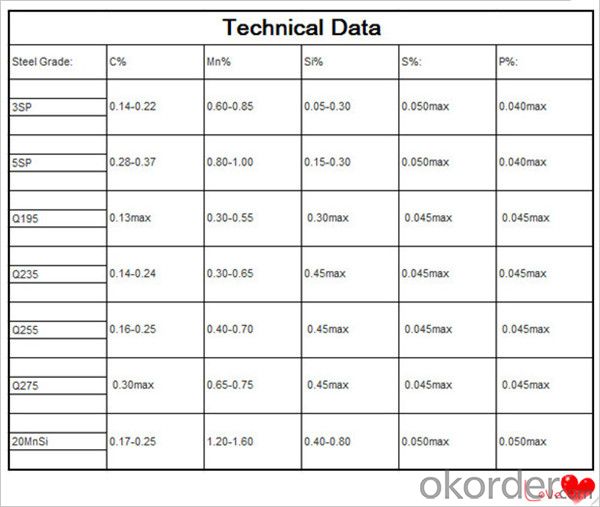
Feature Steel Billet
Rectangular billet continuous casting billet and mainly general carbon steel, low carbon low silicon cold-rolled material, high quality carbon structural steel, high strength low alloy steel, special steel, etc.
The billet is mainly divided into two kinds from the shape:
Slab: cross section width and height of the ratio of the larger, mainly used for rolling plate.
Billet: equal cross section width and height, or a huge difference, mainly used for rolling steel, wire rod. ,
Steel billets have distinct characteristics as compared with already furnished steel bars and products. Billets have a specific grain structure, which enables the metal to be processed more intricately. Steel billets are also known for their malleability and ductility, especially when exposed to varying temperatures during shaping and molding.
Packaging & Shipping
1. Packaging:
1) Small size: in bundles
2)Big size: in bulk
3)in plastic packing or as per customer requirement
2. Delivery time:
1) Normal size: within 7days send from warehouse directly
2) Special size: with 25-30days customer made for you
3. Trade terms:FOB/CFR/CIF
4. Shippment:
1) length:≤5.8m loaded in 20FT Container with 25-27tons
2) length:≤11.8m loaded in 40FT Container with 25-27tons
3) lengnth:≥12m shipped by bulk vessel, FILO terms
Steel Billet Images
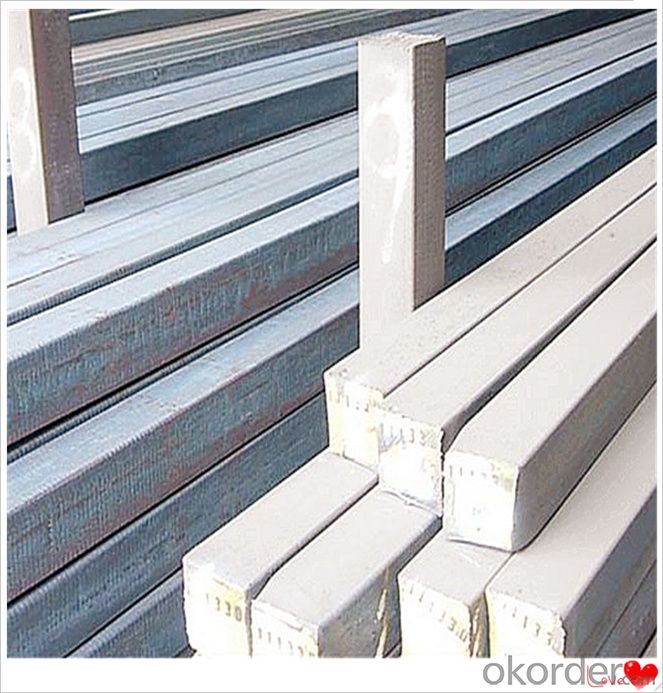
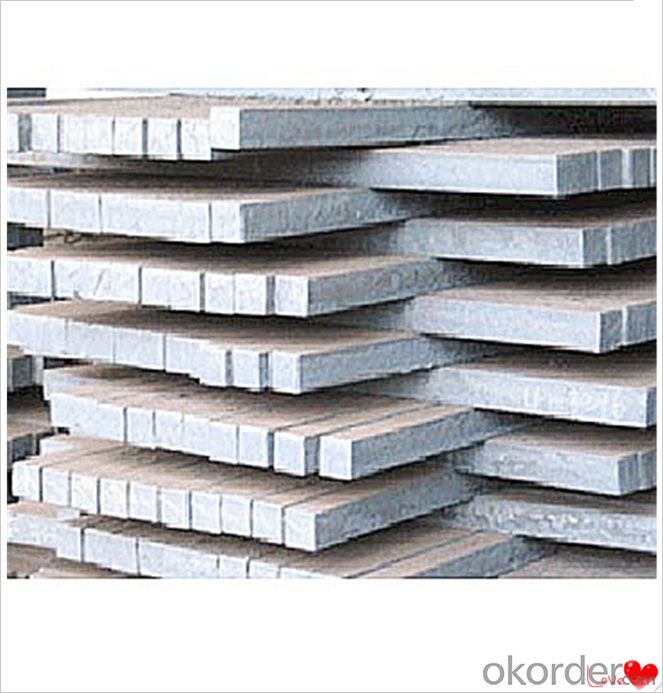
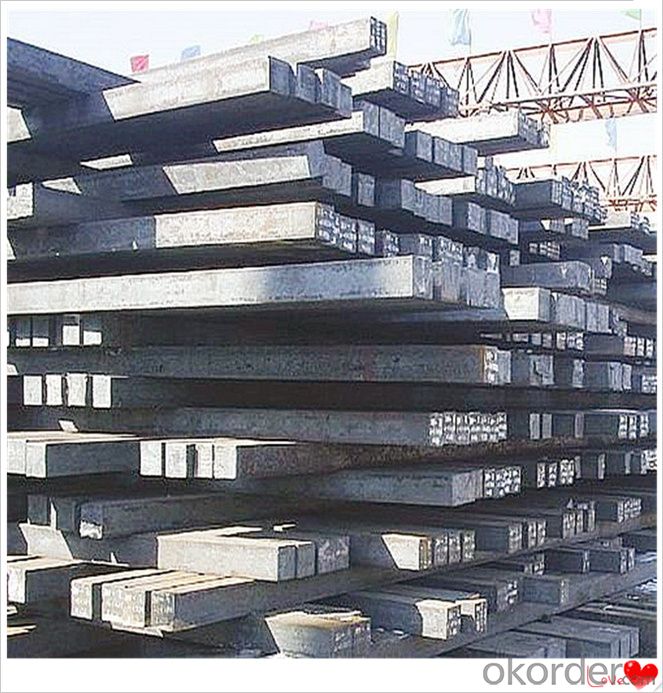

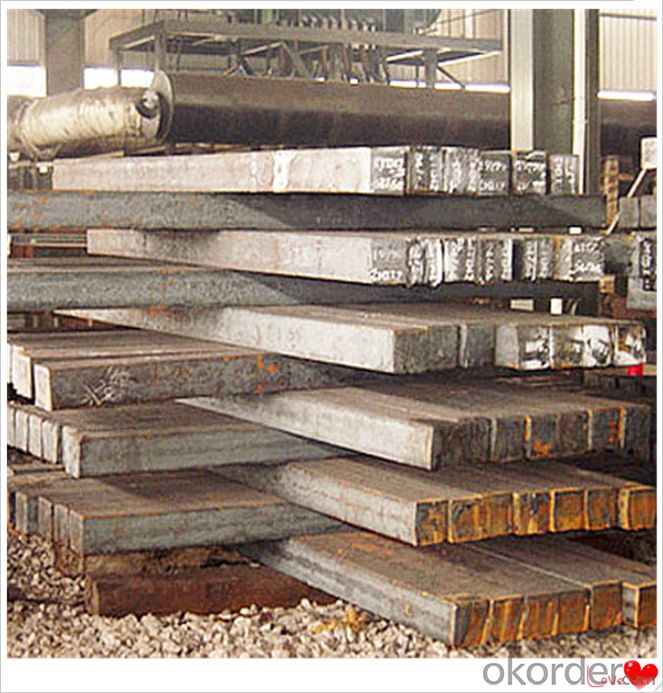
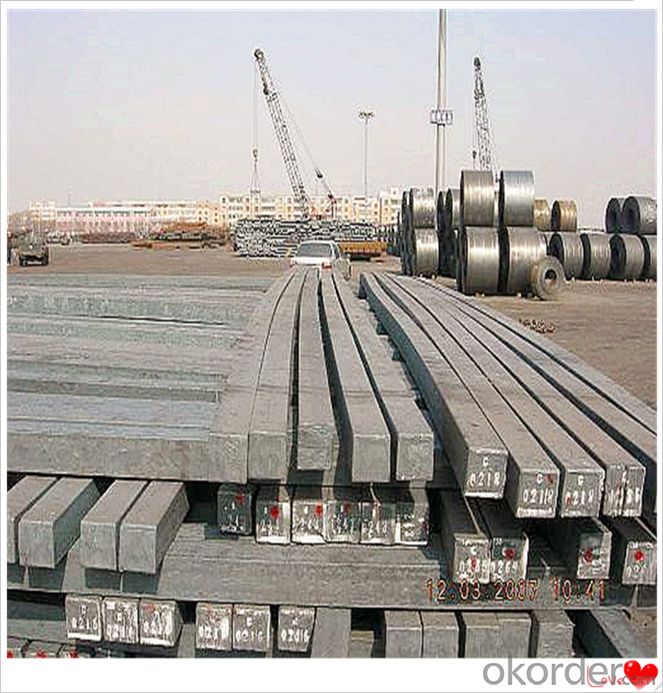
Processing
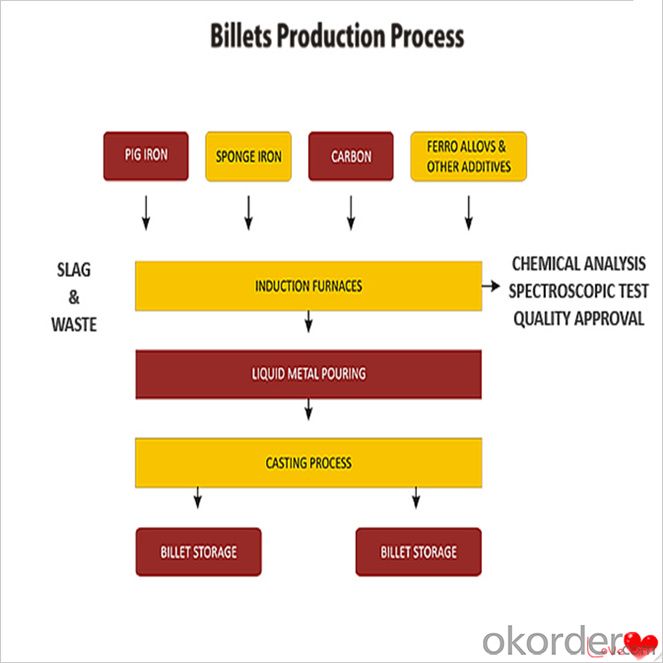
Usage-Billet Steel
Used for the plant, the bridge,shipment building high-rise building construction,lifting and transportation machinery, equipment manufracturing base building the support foundation pile manufacturing.
Billets, or ingots (as they sometimes referred to), are not of practical use until they have been formed into more functional shapes and sizes. While they have already been put in the furnace, they still require a series of shaping and molding procedures such as hot and cold working, milling and cutting before they are sold in hardware stores, or used for different applications. The unformed billets, however, can be used in striking currency such as coins and as reserves, similar to gold bars.
FAQ-Billet Steel
We have organized several common questions for our clients,may help you sincerely:
1) How about your company?
A world class manufacturer & supplier of castings forging in carbon steel and alloy steel,is one of the large-scale professional investment casting production bases in China,consisting of both casting foundry forging and machining factory. Annually more than 8000 tons Precision casting and forging parts are exported to markets in Europe,America and Japan. OEM casting and forging service available according to customer’s requirements.
2) How to guarantee the quality of the products?
We have established the international advanced quality management system,every link from raw material to final product we have strict quality test;We resolutely put an end to unqualified products flowing into the market. At the same time, we will provide necessary follow-up service assurance.
3) How long can we receive the product after purchase?
In the purchase of product within three working days, We will arrange the factory delivery as soon as possible. The pecific time of receiving is related to the state and position of customers.Commonly 7 to 10 working days can be served.
4)Do you have your own QC department?
Yes, we have, our QC department will inspect the goods during the process of mass production and after completion of production.
hot sale!!! Cast Steel Grades/ mild steel bar/ billet steel
(1): High quality steel with reasonable price.
(2): Wide excellent experiences with after-sale service.
(3): Every process will be checked by responsible QC which insures every product's quality.
(4): Professional packing teams which keep every packing safely.
(5): Trial order can be done in one week.
(6): Samples can be provided as your requirements.
- Q:What are the main factors affecting the impact toughness of steel billets?
- The main factors affecting the impact toughness of steel billets include the composition of the steel, the heat treatment process, the presence of impurities or defects, the grain size and microstructure, and the temperature at which the impact test is conducted.
- Q:How are steel billets used in the manufacturing of shipbuilding parts?
- Steel billets play a crucial role in the manufacturing of shipbuilding parts. These billets are essentially semi-finished steel products, typically in the form of rectangular or square bars, that are used as raw material for further processing in shipbuilding. To begin with, steel billets are subjected to a process called rolling, where they are passed through a series of rollers to reduce their cross-sectional area and increase their length. This rolling process transforms the billets into long, thin sections of steel known as plates or sheets. These plates or sheets are then used to create various shipbuilding components, such as hulls, decks, bulkheads, and superstructures. After the rolling process, the steel plates or sheets are cut into desired sizes and shapes using cutting machines or torches. These cut pieces are then formed, bent, and welded together to form the required shipbuilding parts. For instance, the steel plates may be bent and welded to create curved sections for the ship's hull, or they may be formed into intricate shapes for other components. Moreover, steel billets are also used to produce forged shipbuilding parts. In this case, the billets are heated to a high temperature and then subjected to intense pressure to reshape the steel. This forging process results in stronger and more durable shipbuilding parts, which are often used for critical components like propeller shafts, crankshafts, and turbine blades. In summary, steel billets serve as the starting point in the manufacturing of shipbuilding parts. Through processes like rolling, cutting, forming, and forging, these billets are transformed into plates, sheets, and forged components that are used to construct the various structural and functional elements of ships.
- Q:What are the safety precautions to be followed while handling steel billets?
- To prevent accidents and injuries while working with steel billets, it is crucial to adhere to various safety measures. Some key precautions to consider are as follows: 1. Personal Protective Equipment (PPE): It is essential to wear appropriate PPE, including safety goggles, gloves, and steel-toed boots. These items will safeguard against potential hazards like sharp edges, flying debris, and heavy objects. 2. Lifting and Handling Techniques: Employ proper lifting techniques such as bending the knees and using leg muscles to avoid straining the back or causing musculoskeletal injuries. In order to ensure safe and secure handling, utilize equipment such as forklifts, cranes, or lifting slings when moving steel billets. 3. Secure Stacking: When storing or stacking steel billets, it is important to ensure they are stacked securely and evenly to prevent toppling. Employ appropriate storage equipment such as pallets or racks, ensuring they are in good condition and capable of supporting the weight of the billets. 4. Prevention of Slips, Trips, and Falls: Maintain a clean and obstacle-free area around steel billets to prevent slips, trips, and falls. Install anti-slip mats or flooring in areas prone to spills or wet conditions. Additionally, exercise caution in areas where oil or grease may create slippery surfaces. 5. Fire Safety: Due to the potential for sparks when handling steel billets, it is crucial to establish a fire-safe environment. Keep the area clear of flammable materials and have readily accessible fire extinguishers in case of emergencies. 6. Communication and Training: Effective communication with coworkers regarding steel billet movement is vital to avoid accidents or collisions. Furthermore, ensure that all employees are adequately trained in safe handling practices and are aware of the potential risks associated with steel billets. 7. Regular Maintenance and Inspections: Conduct regular inspections of equipment such as forklifts or lifting slings to ensure they are in proper working condition. Promptly report any damages or malfunctions and refrain from using faulty equipment. By adhering to these safety precautions, the risk of accidents, injuries, and damage to both individuals and steel billets can be minimized. Safety should always be a top priority when handling steel billets.
- Q:How do steel billets contribute to the manufacturing of telecommunications equipment?
- Steel billets are an essential raw material in the manufacturing of telecommunications equipment. They are used to form various components such as frames, housings, brackets, and mounting structures. The strength, durability, and versatility of steel make it an ideal choice for these applications, providing the necessary support and protection for sensitive electronic components. Additionally, steel billets can be easily machined, welded, and coated, allowing for precise customization and finishing required in telecommunications equipment.
- Q:How do steel billets contribute to the defense industry?
- The defense industry heavily relies on steel billets, which are crucial for manufacturing various defense equipment and vehicles. These semi-finished steel products serve as a starting point for further processing and shaping into specific components. Armored vehicles, in particular, benefit from steel billets as they require high levels of protection against ballistic attacks and explosive devices. The armor plates and panels, which provide the necessary strength and resilience to these vehicles, are manufactured using steel billets. Furthermore, steel billets find application in the production of different weapon systems, including firearms, artillery guns, and missiles. The strength and durability of steel make it the ideal material for constructing critical components such as barrels and chambers. Steel's ability to withstand high temperatures and pressures is vital for ensuring the reliable and efficient performance of these defense systems. Steel billets also play a crucial role in the manufacturing of naval vessels, submarines, and aircraft carriers. These military ships and submarines require steel components that can endure the harsh marine environment, including corrosion, impact, and extreme temperatures. Steel billets are employed to produce these components, guaranteeing the structural integrity and longevity of these vessels. In conclusion, steel billets are indispensable to the defense industry as they provide the essential raw material for manufacturing a wide range of defense equipment. Their strength, durability, and versatility make them ideal for producing armored vehicles, weapon systems, naval vessels, and other defense-related components. By contributing to the production of these crucial assets, steel billets play a vital role in enhancing national defense capabilities.
- Q:How are steel billets cut into smaller pieces?
- Steel billets are typically cut into smaller pieces through a process called sawing or shearing. There are various methods used to achieve this, depending on the desired size and precision of the cuts. One common method is using a saw blade, either circular or band saws, which are specifically designed for cutting through metal. These saws can be manually operated or automated, depending on the scale of the operation. The billets are clamped securely to prevent movement, and the saw blade is guided along the marked cutting line, gradually slicing through the steel to create smaller pieces. Another approach is shearing, which involves using a shear machine to apply intense force to cut through the billet. This method is often used for thicker billets or when precise cuts are not necessary. The shear machine consists of a fixed blade and a moving blade that come together to sever the billet along the desired cutting line. Additionally, advanced technologies like laser cutting or plasma cutting can also be employed to cut steel billets into smaller pieces. These methods utilize high-powered lasers or plasma jets to melt or vaporize the material along the cutting line, resulting in a clean and precise cut. Overall, the choice of cutting method depends on factors such as the thickness of the billet, the desired precision of the cuts, and the production capacity. Regardless of the method used, safety precautions are always taken to ensure the well-being of the operators and to maintain the quality of the cut steel pieces.
- Q:What are the different types of defects that can occur during steel billet production?
- There are several types of defects that can occur during steel billet production. Some common defects include surface cracks, internal voids or inclusions, segregation, surface roughness, and dimensional deviations. Surface cracks can occur due to improper cooling or handling, while internal voids or inclusions can be caused by impurities in the raw materials. Segregation refers to uneven distribution of elements within the billet, leading to inconsistent properties. Surface roughness can result from inadequate surface preparation or poor rolling conditions. Dimensional deviations can occur due to improper alignment or adjustment of the equipment.
- Q:How is the quality of steel billets ensured during the manufacturing process?
- The quality of steel billets is guaranteed by implementing strict testing measures and adhering to industry standards throughout the manufacturing process. There are several crucial steps involved in maintaining the quality of steel billets: 1. Inspection of Raw Materials: Initially, the raw materials, typically iron ore and/or scrap metal, undergo careful scrutiny to ensure they meet the necessary specifications. This involves examining impurities and verifying the chemical composition. 2. Melting and Refining: The raw materials are melted in a furnace and impurities are eliminated through refining techniques like desulphurization and degassing. This process improves the quality of the steel by reducing unwanted elements and enhancing its overall purity. 3. Casting: Subsequently, the refined steel is cast into billet form using a continuous casting process. This method guarantees uniform size and shape of the billets, which is crucial for further processing. 4. Non-Destructive Testing: Throughout and after the continuous casting process, various non-destructive testing methods, including ultrasonic testing, magnetic particle inspection, and visual inspection, are employed to assess the integrity of the billets. These tests identify any defects or imperfections that may compromise the quality of the billets. 5. Heat Treatment: Depending on the desired properties of the final steel product, the billets may undergo heat treatment processes like annealing, quenching, or tempering. These procedures further enhance the strength, hardness, and other mechanical properties of the steel. 6. Final Inspection: The finished steel billets undergo a final inspection to ensure they meet the required specifications. This involves assessing their dimensions, surface quality, and mechanical properties. Typically, samples from each batch are subjected to destructive testing to confirm their strength and other properties. 7. Traceability and Documentation: It is essential to maintain proper traceability and documentation of all quality-related activities throughout the manufacturing process. This includes recording test results, maintaining batch records, and ensuring accurate identification and labeling of the billets. By adhering to these rigorous procedures and conducting various tests, manufacturers can guarantee the maintenance of steel billet quality at every stage of the manufacturing process. This ensures that the final steel products made from these billets will meet the required standards and perform as intended in various applications.
- Q:How do steel billets contribute to the construction industry?
- Steel billets contribute to the construction industry by serving as the raw material for various steel products used in construction. These billets are transformed into beams, columns, rods, and other structural components that provide strength, stability, and durability to buildings and infrastructure. Additionally, steel billets are used in the manufacturing of reinforcements for concrete, enhancing the structural integrity of concrete structures such as bridges, highways, and buildings. Overall, steel billets play a crucial role in the construction industry by providing the necessary materials for safe and reliable structures.
- Q:What is the role of steel billets in the manufacturing of automotive frames?
- The manufacturing of automotive frames heavily relies on steel billets, which fulfill a crucial role. These billets are essentially semi-finished steel products utilized as raw material across various industrial processes. In the automotive sector, steel billets undergo a series of manufacturing steps to become automotive frames. Primarily, steel billets are chosen for their exceptional strength and durability. Their composition and mechanical properties make them ideal for supporting the weight and structural integrity of automotive frames. These frames need to endure diverse loads, shocks, and vibrations, which is where steel billets provide the necessary strength and stability. The manufacturing process commences with heating the steel billets to a specific temperature known as the forging temperature. At this temperature, the billets become pliable and can be easily shaped and manipulated. Subsequently, they are introduced into a forging press or machine, where immense pressure is employed to mold them into the desired shape of the automotive frame. Following the forging process, the frames commonly undergo heat treatment to enhance their mechanical properties and performance. This process involves heating the frames to a specific temperature and then rapidly or gradually cooling them to achieve the desired hardness, strength, and toughness. Heat treatment also aids in relieving internal stresses and enhancing the overall structural integrity of the automotive frames. Once the frames are forged and heat-treated, they go through various finishing processes, such as machining, welding, and surface treatment. Machining is executed to eliminate excess material and refine the frame's dimensions, ensuring precise specifications are met. Welding is employed to join different components of the frame together, guaranteeing their structural integrity. Additionally, surface treatments like painting or galvanizing are administered to safeguard the frames from corrosion and enhance their appearance. In summary, the indispensability of steel billets in the manufacturing of automotive frames arises from their remarkable strength, durability, and malleability. They serve as the foundation for creating robust and dependable structures capable of withstanding the demands of the automotive industry. Through processes such as forging, heat treatment, and finishing, steel billets are transformed into automotive frames that constitute the backbone of vehicles, ensuring their safety and performance on the road.
1. Manufacturer Overview |
|
|---|---|
| Location | |
| Year Established | |
| Annual Output Value | |
| Main Markets | |
| Company Certifications | |
2. Manufacturer Certificates |
|
|---|---|
| a) Certification Name | |
| Range | |
| Reference | |
| Validity Period | |
3. Manufacturer Capability |
|
|---|---|
| a)Trade Capacity | |
| Nearest Port | |
| Export Percentage | |
| No.of Employees in Trade Department | |
| Language Spoken: | |
| b)Factory Information | |
| Factory Size: | |
| No. of Production Lines | |
| Contract Manufacturing | |
| Product Price Range | |
Send your message to us
Q275 Steel Billets Q235,Q255,Q275,Q345,3SP,5SP,20MnSi Made in China
- Loading Port:
- China main port
- Payment Terms:
- TT OR LC
- Min Order Qty:
- 20 m.t.
- Supply Capability:
- 200000 m.t./month
OKorder Service Pledge
OKorder Financial Service
Similar products
New products
Hot products
Related keywords
